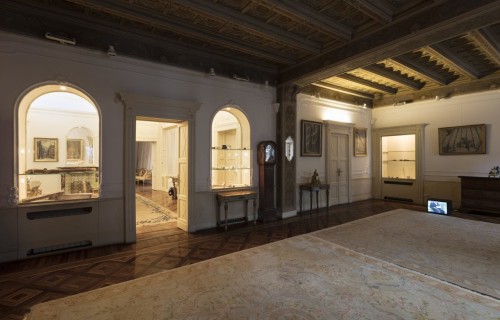
From 10 April to 29 June 2018 the Fondazione Adolfo Pini presents - during the Milan Art Week in conjunction with miart - the Labyrinth exhibition, a site-specific project created by the artist Jimmie Durham, curated by Gabi Scardi.
Jimmie Durham is one of the major artistic personalities of the present. Intellectual, essayist and poet, as well as visual artist, from the sixties his work highlights the system of conventions in which we live; conventions concerning ideas, behaviors, history and its interpretations. To question them means to open oneself to doubt, to highlight the facet of reality, to let emerge a multiplicity of possible visions.
His works consist, in many cases, in arrangements of natural or industrial materials, grafted on each other; materials that normally escape attention or are too far below any value to be classified; these works therefore amount to comments on the nature of things and their value. In other cases, installations are made up of objects found or created: objects that are concentrated in everyday life, that tell stories, and tell us who we are. At the base of his practice there is in fact the will to give back to the things the possibility to present themselves in their essence; to deconstruct the superstructures that surround them, and with them the cardinal concepts of the civilization of consumption.
For the Adolfo Pini Foundation the artist creates a new project, specially conceived, working on the existing space and on its structures. In particular, Durham brings out what is normally "inside" the body of architecture; makes visible the materials that compose it, reveals what is under the coating: the "viscera", the "entrails"; the removed; Innards, in fact. By extension, the artist thus addresses the question of what is given space or what is hidden; of what is said or omitted. The project combines a 1994 video, The Man Who Had A Beautiful House, linked to an idea of living that comes first, and goes beyond the walls of a building. In the finished space but loaded with the Foundation's past, through the theme of architecture, the artist confronts once more, with the idea of the social and cultural construct and with the structures, with the conventions, with the categories that 'accompany.